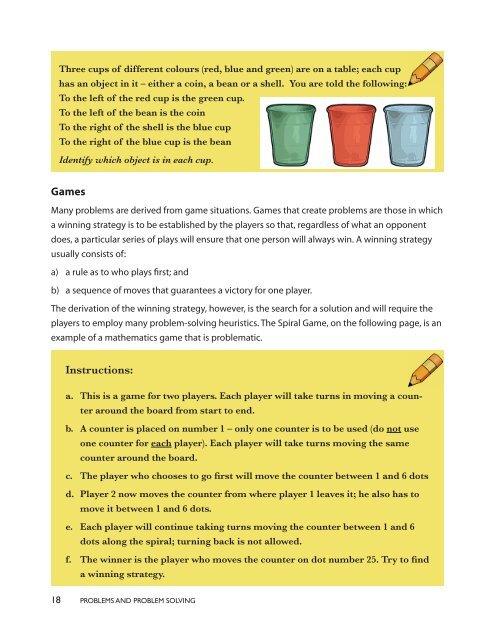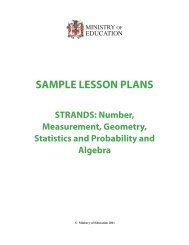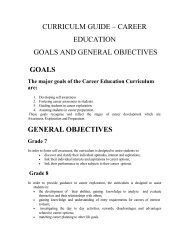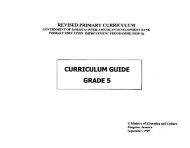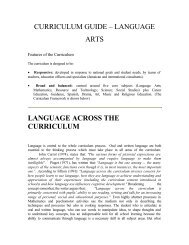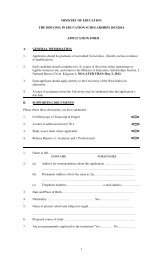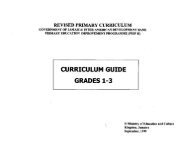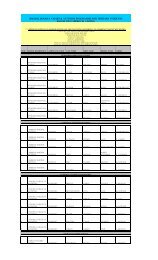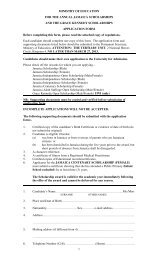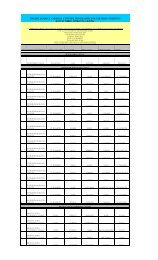Problems and Problem Solving - Ministry of Education
Problems and Problem Solving - Ministry of Education
Problems and Problem Solving - Ministry of Education
Create successful ePaper yourself
Turn your PDF publications into a flip-book with our unique Google optimized e-Paper software.
Three cups <strong>of</strong> different colours (red, blue <strong>and</strong> green) are on a table; each cup<br />
has an object in it – either a coin, a bean or a shell. You are told the following:<br />
To the left <strong>of</strong> the red cup is the green cup.<br />
To the left <strong>of</strong> the bean is the coin<br />
To the right <strong>of</strong> the shell is the blue cup<br />
To the right <strong>of</strong> the blue cup is the bean<br />
Identify which object is in each cup.<br />
Games<br />
Many problems are derived from game situations. Games that create problems are those in which<br />
a winning strategy is to be established by the players so that, regardless <strong>of</strong> what an opponent<br />
does, a particular series <strong>of</strong> plays will ensure that one person will always win. A winning strategy<br />
usually consists <strong>of</strong>:<br />
a)<br />
b)<br />
a rule as to who plays first; <strong>and</strong><br />
a sequence <strong>of</strong> moves that guarantees a victory for one player.<br />
The derivation <strong>of</strong> the winning strategy, however, is the search for a solution <strong>and</strong> will require the<br />
players to employ many problem-solving heuristics. The Spiral Game, on the following page, is an<br />
example <strong>of</strong> a mathematics game that is problematic.<br />
Instructions:<br />
a. This is a game for two players. Each player will take turns in moving a counter<br />
around the board from start to end.<br />
b. A counter is placed on number 1 – only one counter is to be used (do not use<br />
one counter for each player). Each player will take turns moving the same<br />
counter around the board.<br />
c. The player who chooses to go first will move the counter between 1 <strong>and</strong> 6 dots<br />
d. Player 2 now moves the counter from where player 1 leaves it; he also has to<br />
move it between 1 <strong>and</strong> 6 dots.<br />
e. Each player will continue taking turns moving the counter between 1 <strong>and</strong> 6<br />
dots along the spiral; turning back is not allowed.<br />
f. The winner is the player who moves the counter on dot number 25. Try to find<br />
a winning strategy.<br />
18 PROBLEMS AND PROBLEM SOLVING<br />
<strong>Problem</strong><strong>Solving</strong>.indd 18<br />
8/24/12 6:55:39 PM


